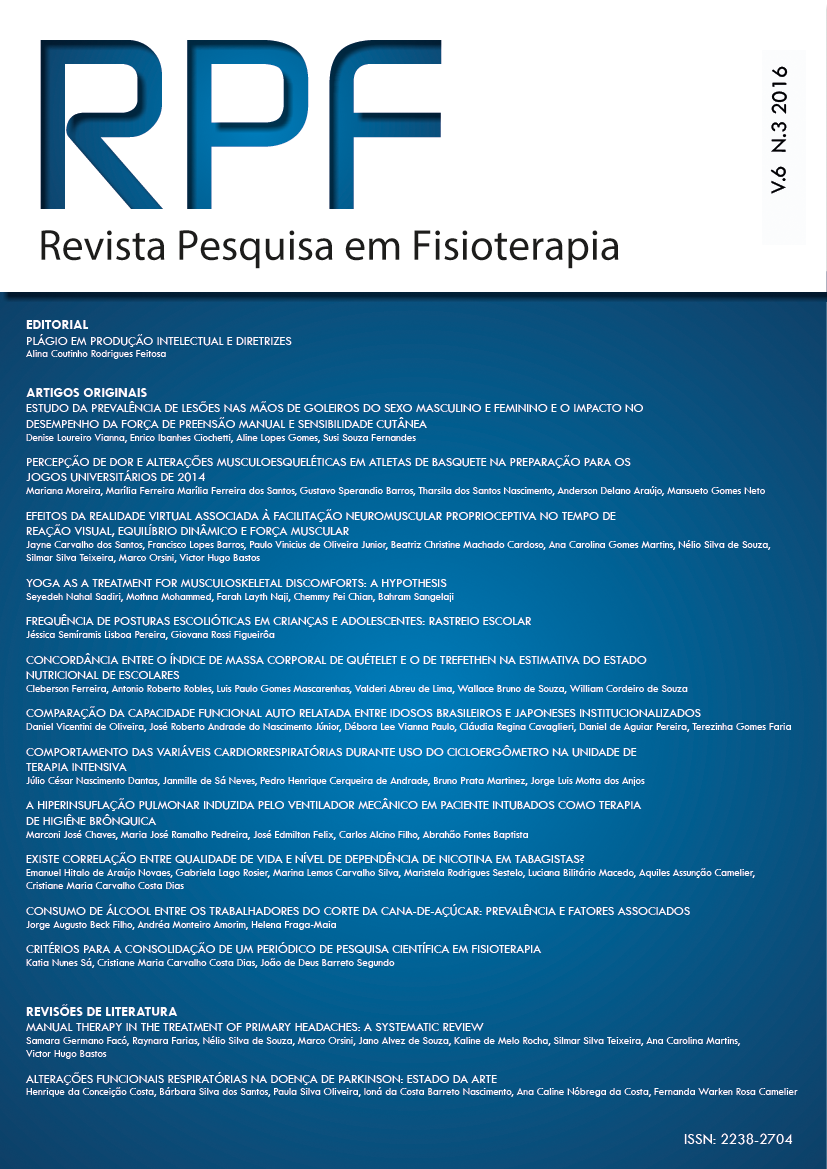BEHAVIOR OF VARIABLE FOR ACTIVE CARDIORESPIRATORY CYCLE ERGOMETER USE IN INTENSIVE CARE UNIT
DOI:
https://doi.org/10.17267/2238-2704rpf.v6i3.938Keywords:
Physiotherapy, Intensive Care Unit, ExerciseAbstract
Objective: To evaluate the cardiorespiratory variables when using the ergometer in the upper limbs and lower limbs in patients admitted to an intensive care unit. Methods: This is a retrospective study in which data were extracted from medical records and record collection, at different times and compared. Acute physiological changes while using the cycle ergometer were collected during the intervention (5,15 and 30 minutes of activity) and after. The variables were systolic blood pressure (SBP), diastolic blood pressure (DBP) and mean (MAP), heart rate (HR), double product (DP), oxygen saturation (SpO2), respiratory rate (RR) and Borg. These measurements were performed according to the time technique patient tolerance. Results: The sample consisted of 29 patients, a comparative analysis of the changes in the cycle ergometer performed with lower limbs and upper limbs was no statistical difference between the two forms (8.5 ± 4.9 vs 11.5 ± 9.2 minutes; value of p> 0.05) and had no difference between the tolerance time between the technique using the lower limbs and upper limbs (8.5 ± 4.9 vs 11.5 ± 9.2 minutes; p-value: 0.281 ). Most patients had to interrupt criterion changing the Borg (91.2%), and almost always associated with changes in other cardiorespiratory variables. Conclusion: The use of active cycle ergometer for upper and lower limbs showed no difference in cardiorespiratory variables for use in ICU patients. However, its application time will vary according physiological responses considered within safe values.



